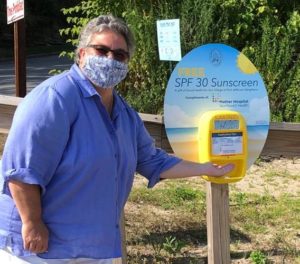 Choosing a sunscreen isn’t as easy as it used to be. Over the last few years there has been a lot of debate and growing concern over how effective they are, what kinds of chemicals they might contain and how those chemicals affect your skin and overall health. There are so many options that the choice might seem overwhelming. Here’s how to make the best decision and protect your skin from those harmful rays.
Choosing a sunscreen isn’t as easy as it used to be. Over the last few years there has been a lot of debate and growing concern over how effective they are, what kinds of chemicals they might contain and how those chemicals affect your skin and overall health. There are so many options that the choice might seem overwhelming. Here’s how to make the best decision and protect your skin from those harmful rays.
Is higher SPF better?
SPF stands for sun protection factor. It is a measure of how long a sunscreen will protect you from ultraviolet (UV) B rays. You’ve probably already heard that sunscreens with an SPF over 50 only provide a negligible increase in protection, and that is mostly true. SPF 50 blocks 98 percent of UVB rays. So, going over 50 only provides another percent or so of protection, but at the end of the day, more protection is still more! It’s also worth noting that sunscreens regularly test below their listed SPF – 24 out of 73 tested by Consumer Reports had less than half their claimed number. “Individuals with lighter skin will often need higher SPF than those with darker skin,” says Jessica Blydenburgh, DO, “but dark skin does not prevent one from accruing skin cancer and sun damage. So use sunscreen regardless of your skin phototype.”

Port Jefferson Village Mayor Margot Garant with an SPF 30 sunscreen dispenser sponsored by Mather Hospital to promote good summer skin health.
Another issue to consider is that most of us don’t apply nearly enough sunscreen. A 2014 study found that most of us only apply about a third to half of what manufacturers base their SPF analysis on. This means that in addition to sunscreens testing below their listed SPF, you’re also decreasing your potential level of protection further by applying too little. That’s why reapplying periodically, especially if your sweating or swimming, is so important. For maximum effectiveness, apply sunscreen “least 15 minutes prior to sun exposure,” Dr. Blydenburgh says. Sunscreen should only be applied to those six months and older. “Babies younger than that need complete protection from the sun with clothing, hats and sunshades.”
But I heard that sunscreen is bad for you.
Sunscreen’s active ingredients can be divided into two main categories – physical and chemical. Physical ingredients include both zinc oxide and titanium dioxide. These ingredients are easily recognized by their characteristic white residue which sits on top of the skin and literally deflects UV rays. These ingredients that sit on the skin’s surface have been deemed safe by the FDA. On the other hand, the long list of chemical ingredients which are yet-to-be-determined safe by the FDA are absorbed into your skin and absorb the UV rays. The main concern when it comes to chemical ingredients is whether and how much they enter the bloodstream and what effect that might have on your health. One particular chemical ingredient, oxybenzone, should be avoided according to Dr. Blydenburgh as it “is potentially carcinogenic given its estrogenic-like properties.”
You may be wondering why it has taken the FDA so long to question the health effects of these ingredients. Partly, it’s because the way we use sunscreen has dramatically changed over the last few decades. Past regulations were based on only using sunscreen for “special occasions,” like a day at the beach where you would be exposed to a lot of strong UV rays. Now many of us use SPF as part of our daily routine, in cosmetics and moisturizers, as a preventative measure against skin cancer, sunspots and wrinkles. More usage means more potential for your body to absorb these ingredients. Unfortunately, the jury is still out regarding the potential health effects as more long-term studies are needed.
Is spray-on sunscreen better or worse?
Aside from the fact that we’re already terrible at putting on enough sunscreen, spray sunscreen often ends up in the wind, or on the person next to you. It’s easy to deduce that a fine mist is likely going to be even less effective at providing adequate coverage and blocking damaging rays. Another point to consider is that with sprays you’re likely to inhale a lot of those particles. The FDA is still investigating whether inhalation of these particles is dangerous for human lungs. It is better to be safe than sorry – opt for a cream.
Source: https://www.popsci.com/which-sunscreen-safe-effective/

